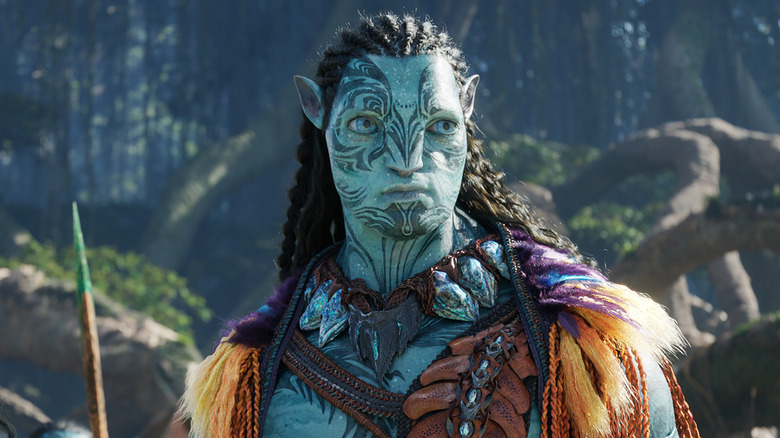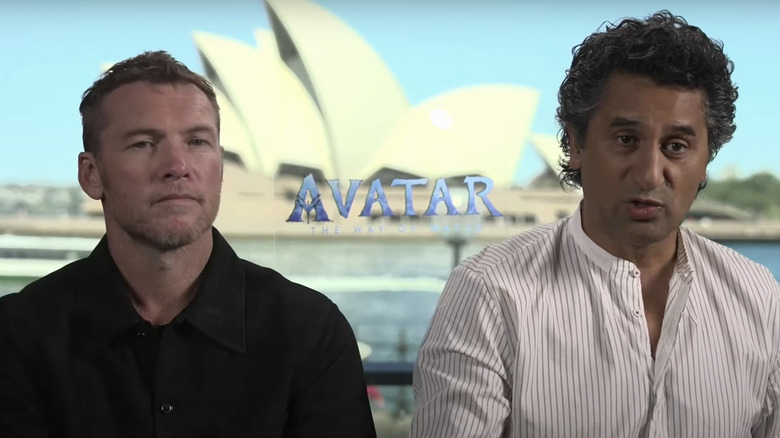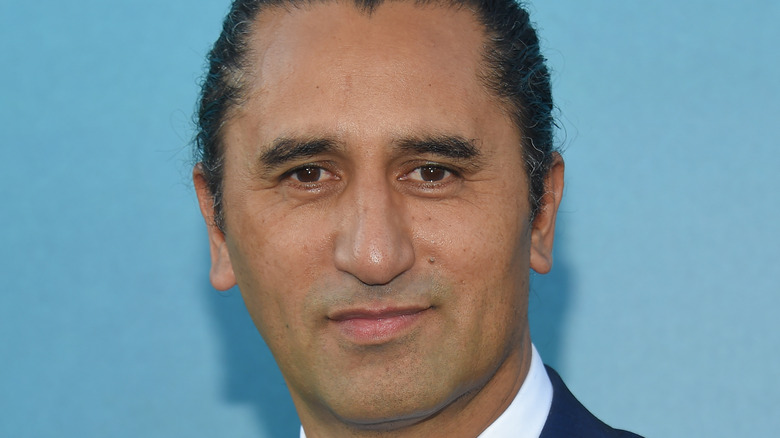Avatar: The Way Of Water's Cliff Curtis Says The Fun On-Set Atmosphere Meant He 'Never Worked A Day'
The box office got a much-needed jolt with the release of "Avatar: The Way of Water." James Cameron's return to Pandora continues to bring in audiences around the world: it has already rushed past "Avengers: Infinity War" to become the fifth highest-grossing film of all time (via Deadline). With no real slowdown in sight, many are noting the repeat viewers that are taking in this story time and time again.
Set 15 years after the first "Avatar," the film focuses on Jake and Neytiri's current life. The return of a familiar villain sees the couple and their children flee to another part of the exomoon. Once there, the audience experiences an entirely new realm of this awe-inspiring fictional location; more than just an exploration of the setting, viewers are also making connections to the characters that inhabit this space. It's a testament to not only the visual effects and story, but the actors portraying these figures. Their work is additionally paying off in worldwide box office attention — in one case setting star Zoe Saldaña up to be the first performer to have four films go over $2 billion.
The second film in the franchise introduces new characters such as Metkayina's Olo'eyktan, Tonowari. Actor Cliff Curtis came to the role with an already extensive set of credits. He's pulling back the curtain as to what it was really like working on the blockbuster.
Curtis saw this as a fun experience
Cliff Curtis came to "Avatar: The Way of Water" after decades in the film industry. His stellar filmography covers everything from "Deep Rising" and "Bringing Out The Dead" to "Fear the Walking Dead" and "Meg." Joining James Cameron's epic was an experience worth taking on — even in the toughest of conditions. Geek Culture spoke to the actor and his co-star Sam Worthington about the film; one of their questions focused on the best and worst things about filming in and around water.
For Curtis, the experience was akin to time spent at a fun park, except he was getting paid for the adventure. "We get to do that when we go to work, it means that for me I never worked a day on this movie," the actor said. According to Curtis, this was also a chance to play in a world full of incredible technology.
New technological elements were at the forefront of filming, offering new and exciting techniques. Cameron and a team of experts in the field utilized a camera system they built — taking advantage of a stereoscopic 3D system. He also relied on it as he worked out motion capture for both land and water effects; production included a 900,000-gallon tank that was created especially for the project (via The Verge).
While other actors might have bristled at the time spent in the water, Curtis was eager to take on the challenges of this massive task. "I love working in the water, whether it's on top of the water, underneath the water, anything to do with the water was just a gift for me and I just enjoyed every minute," he added.
He bonded with co-stars during a special excursion
Curtis also found camaraderie with his co-stars, creating something that is easy to see as their on-screen counterparts interact. In an interview with Supanova, Curtis and Sam Worthington talked about one of the outings that helped Curtis develop a bond not only with his co-stars but with the ocean itself. Worthington revealed they had gone stingray diving outside of the production, revealing that Curtis seemed stuck considering how long he spent down there — something confirmed by his co-star. The experience seems to have helped Curtis connect to this character, though, and he described those moments underwater as a spiritual experience.
The night dive had additional meaning for Curtis, a New Zealand actor of Māori descent; he talked about a traditional tattoo he has of the manta ray. "New Zealand, or Aotearoa, as we call it, the North Island is actually considered to be a manta ray," the actor said. "It's a fish. The top is a tail and the head of the fish is actually where Wellington is, and the harbour is the mouth of the stingray."
With the tattoo as a focal point, Curtis saw this as a chance to further build a relationship with this natural habitat and its extensive undersea life. Worthington asked his co-star if the animals were communicating with him. Curtis described it as a completely surreal experience. The results of his extensive time underwater can be seen in "Avatar: The Way of Water" as well as its subsequent sequels.


